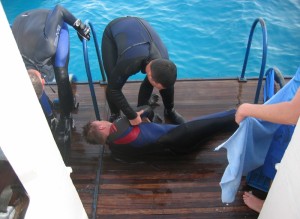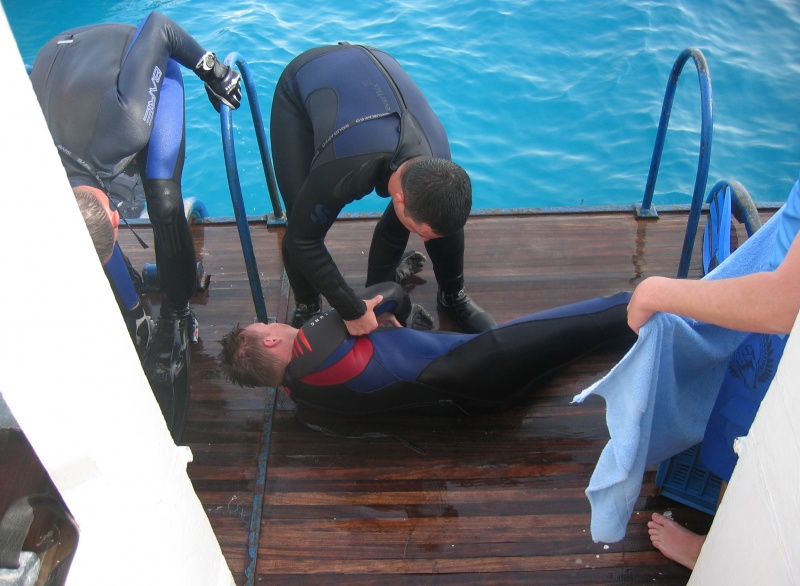The most common caisson diseases manifestations are joint pain and numbness. The following is: muscle weakness and inability to empty the bladder. Fun caisson disease is easy to identify because there are signs and symptoms clearly visible. However, most caesarean section results in mild joint pain or paraesthesia (abnormal burning, tingling or tickling sensation) in the extremities.

In many cases, these symptoms are attributed to other causes, such as overwork, strong water lifting capacity, or even an overstretched wetsuit. This delays seeking help, and it is therefore usually emphasized that the first symptom of DCS is denial. Sometimes, these symptoms do not get worse and go away on their own, but many times they become serious until it becomes clear to you that something is wrong and you need help.
What happens if you do not seek help? Severe caisson disease can lead to bladder dysfunction, sexual dysfunction or muscle weakness, to name a few.
In some cases of neurological caisson disease, permanent damage to the spinal cord may occur, which may or may not have characteristic symptoms. However, this type of damage can reduce the chances of recovery after the next exposure to caisson disease.
Untreated joint pain, which tends to subside, is thought to be the cause of bone damage called osteonecrosis. Unless there are many untreated cases of caisson disease, there are no symptoms. If this has happened, the bones become brittle as a result of the damage, and various problems can occur in the joints.
In the article Detection of Caisson disease, uses information from DAN (diversalertnetwork.org)

